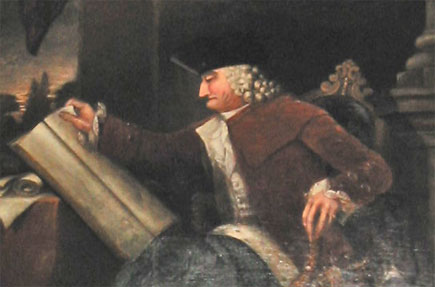WELCOME to Nassau harbor!!! This lovely island is one of the settings for The Reckoning, MaryLu Tyndall's latest exciting release! This is a time travel book, so there are both contemporary and historical elements plus even an alternate reality section--it really showcases MaryLu's considerable skills as an author!
A modern day miss is transported back in time when she finds this amulet aboard ship during a modern-day Tall Ships festival in coastal California! And it plays a part in the story line, of course, for the ending because there has to be a "portal" when you have a time travel novel.
 |
| Hero Captain Dutton's ship, "The Reckoning"! |
Come on into the Captain's cabin and have some refreshments!
Also, be sure to stop by our Facebook party, during which the authors will be chatting with our guests. The FB party event page is the place to show off your clothing for this event!
 |
| The Reckoning, by MaryLu Tyndall |
Isn't this a gorgeous cover? Love it!
Available for purchase online at Amazon. (click here)
(For Barnes and Noble, click on the cover image!)
Giveaways: In addition to a copy of her book, MaryLu has a nice ocean bath gift basket that contains Bubble bath, bath salts, shower gel, and body lotion. 

We're serving an assortment of teas, lemonade and Jamaican Blue Mountain coffee.
Desserts: Plum-Duff pudding, Shrewsbury Cakes
Snacks/ meal: Goose and Truffle Pie, Lobscouse, Breadfruit biscuit, and an assortment of toasted cheese.
* * * *
A Groom for Josette is the second story we're celebrating during our July Tea Party! This story, by Gabrielle Meyer, is a novella in The Convenient Bride Collection from Barbour Publishers.
Once you step off Captain Dutton's ship, The Reckoning, be sure to board Itasca, a Mississippi steamboat traveling from St. Louis to Minneapolis in 1855.
This is the ship our heroine, Josette LeBlanc, takes from St. Louis to Minnesota Territory in hopes of finding a husband. She goes after seeing this ad: Wanted: good-looking women for the town of Little Falls, Minnesota Territory. We guarantee a hundred eligible bachelors for every single lady. If interested, please inquire with Philip Sommers at the company store.
 |
| Josette LeBlanc, the daughter of a French Fur Trader and a Chippewa mother |
 |
| Little Falls, Minnesota |
When Josette arrives in Little Falls, she reserves a sitting room at the Northern Hotel to conduct interviews with prospective grooms. However, when the appointed hour arrives, the hotel proprietor doesn't bring her to the sitting room...he brings her to the ballroom, where over a hundred eligible men stand waiting!
But only one man catches Josette's eye. His name is Alexandre Dugas and he's traveling up the Mississippi from New Orleans to pastor a small church just north of Little Falls.
The only problem is, he isn't looking for a wife.
When Alexandre meets Josette, he feels compelled to marry her...but a misunderstanding threatens both their plans. Will they find their happily-ever-after, or have they made the biggest mistake of their lives?
Gabrielle is offering a copy of The Convenient Bride Collection to one lucky winner!
****
Step into the 17th Century with a chance to win a copy of To Capture Her Heart
by Rebecca DeMarino!
And sail on The Swallow from Nassau
to Southold, Long Island, NY
Mayhap the Captain of The Reckoning will toss us a breadfruit biscuit! Or better still, we'll walk the plank and join the party with a plate of Mary Horton's Ginger Cakes!
 |
| Captain Horton's The Swallow |
It is 1653 and Heather Flower, a princess of the Montaukett tribe, is celebrating her wedding feast when a rival tribe attacks, killing the groom and kidnapping her. Though her ransom is paid by an Englishman, she is bound by her captors and left to die—until she finds herself rescued by handsome Dutch Lieutenant Dirk Van Buren.
Still tender from her loss, Heather Flower begins to heal in the home of the Hortons, English friends of her people. Torn between her affection for Dirk and her longtime friendship with Ben Horton, Heather Flower must make a difficult choice—stay true to her friend or follow her heart.
Giveaway: A Copy of To Capture Her Heart
Giveaway: A Copy of To Capture Her Heart
Rebecca DeMarino
writes love, legends and lore as a historical romance author and lives in the
beautiful Pacific Northwest. She inherited her love of baking and gardening
from her mother, a love of horses, reading and writing from her dad, and the
wanderlust gene from both parents. Her travels have taken her from
Alaska to Nebraska and Florida, from Long Island to England and Italy, and from
Washington DC to Texas, California and Guam.
Note:
Our wonderful Facebook Party Event page was taken down--we don't know why. But here is the link to the new page (click here) where you can chat live with authors from 5:45 to 9:00 PM Eastern Time.
Note:
Our wonderful Facebook Party Event page was taken down--we don't know why. But here is the link to the new page (click here) where you can chat live with authors from 5:45 to 9:00 PM Eastern Time.





















